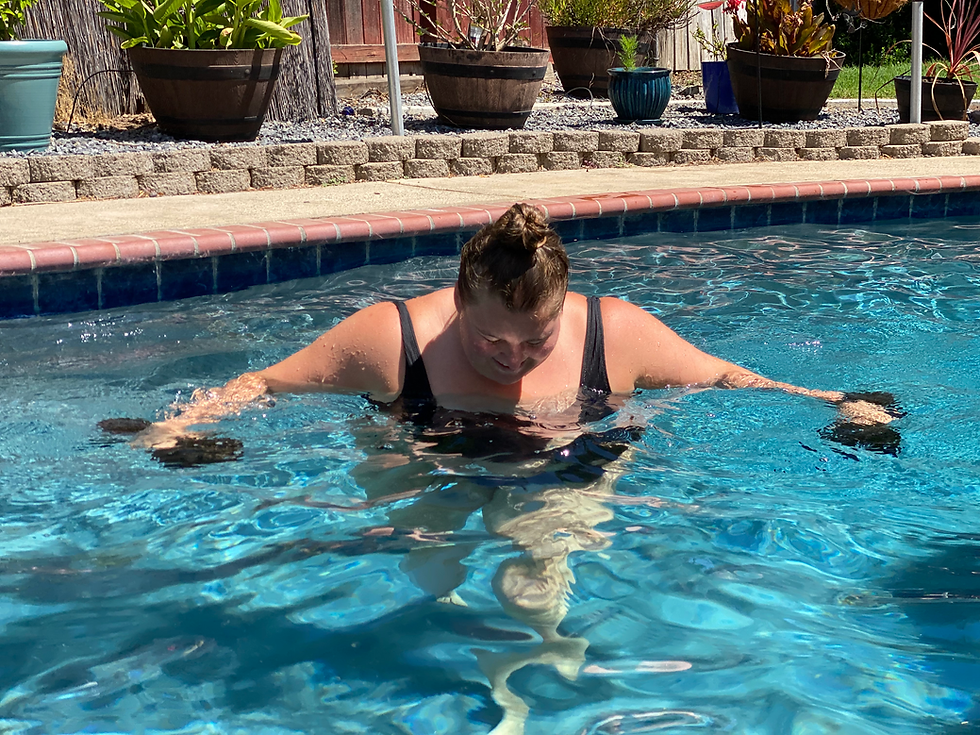Moving Beyond Avoidance: Rebuilding Body Trust in Fitness
- Wendy JIMJAMM Welsher
- Sep 24
- 2 min read

Many people in larger bodies avoid traditional fitness spaces such as gyms, group classes, or sports programs. This avoidance isn’t a matter of laziness or lack of discipline — it is often a protective response shaped by trauma, negative past experiences, and the impact of fat stigma.
Avoidance makes sense. But while it may feel safer in the short term, it often prevents people from reconnecting with movement, rebuilding body trust, and experiencing the full benefits of strength and fitness.
Why Avoidance Happens
Trauma and fat stigma combine to create significant barriers to movement. Research shows that people in larger bodies frequently self-exclude from gyms and organized sports due to previous experiences of shame, judgment, or exclusion (Thedinga et al., 2021). Even when there is motivation to move, internalized stigma can make it harder to enjoy exercise and easier to disengage (Smith et al., 2024).
The “Safe Corner” of Movement
For many, alternative forms of movement such as dance, yoga, or home-based exercise provide a safe entry point. These practices can be valuable and healing. However, when they become the only space where movement feels possible, individuals may never step into the deeper work of rebuilding trust in their body.
Strength training and weightlifting, for example, offer a powerful opportunity to reconnect with the body. Unlike environments that focus on appearance or weight loss, the barbell becomes a neutral tool. It does not judge; it simply responds. Each lift is an opportunity to build confidence, capability, and resilience.
When Protection Becomes Limiting
Avoidance often starts as self-protection, but over time it can become limiting. What begins as a way to reduce harm can grow into a barrier that prevents healing and progress.
Research confirms that avoidance itself is a mechanism through which stigma continues to cause harm, preventing people from re-engaging with movement and recovery (Han et al., 2018).
The Path Forward
Rebuilding body trust requires patience, compassion, and support. Key elements include:
Choice: Prioritize movement that feels empowering and self-directed.
Gradual exposure: Begin with small, manageable steps into spaces or movements that feel intimidating.
Support: Seek inclusive, trauma-informed environments that emphasize safety and respect.
Strength training: Explore lifting or resistance work as a way to experience the body’s power and resilience.
Celebration of wins: Recognize every effort and achievement, no matter how small, as evidence that the body can be trusted.
Why It Matters
Movement is not about shrinking the body — it is about expanding one’s capacity to live fully. Research consistently shows that fitness is more important to long-term health outcomes than body weight alone (University of Virginia, 2024). For individuals in larger bodies, strength and activity provide profound benefits for health, confidence, and overall well-being.
Getting Started
If you are beginning (or beginning again), start small. A short walk, gentle stretching, or lifting a backpack filled with books can be a meaningful first step. Pay attention to what your body does well, and build from there.
Strength, trust, and healing are built one step — and one rep — at a time.

👉 Interested in learning more about trauma-informed, inclusive coaching? Work with Wendy to start building body trust through movement.






Comments